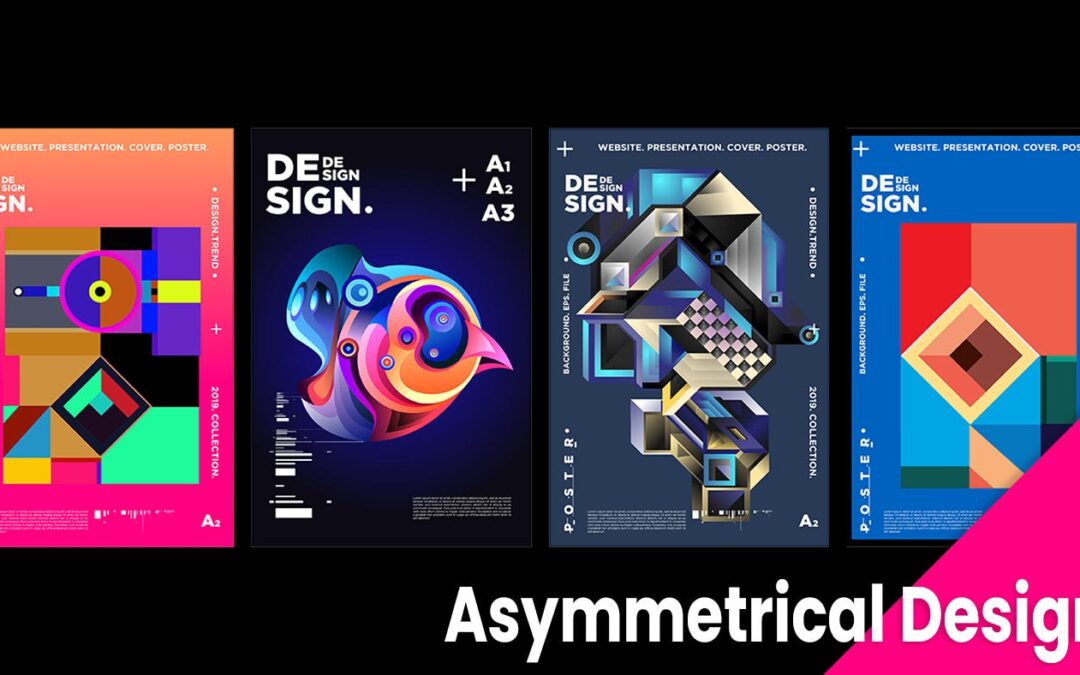Have you ever wondered how to create a visually appealing asymmetrical layout for your designs?
Asymmetrical layouts can add a modern and dynamic feel to your designs, but they can be intimidating to create if you’re not familiar with the principles behind them. In this article, we’ll show you how to master asymmetrical layouts and create stunning designs that stand out from the crowd. Let’s dive in!
Understanding Asymmetrical Layouts
When we think of design, symmetry often comes to mind as it’s a fundamental principle in creating pleasing compositions. However, asymmetry can be just as captivating and engaging if done right.
what is Asymmetry?
Asymmetry in design refers to a lack of perfect alignment or balance in a layout. It involves using elements of different sizes, shapes, colors, and textures to create visual interest and movement.
why use Asymmetrical Layouts?
Asymmetrical layouts can make your designs more dynamic, unique, and engaging. They can break away from the traditional, predictable look of symmetrical designs and add a sense of creativity and excitement. By using asymmetry strategically, you can draw the viewer’s eye to key elements and create a more memorable design.
Principles of Asymmetrical Design
Designing with asymmetry requires a good understanding of the principles that make it work. Let’s discuss some key principles that will help you master asymmetrical layouts.
Balance
Even though asymmetrical layouts lack the symmetry of their counterparts, they still need to achieve balance to be visually appealing. Balance in asymmetry is achieved through the careful placement of elements with contrasting visual weights.
Contrast
Contrast plays a crucial role in creating an effective asymmetrical layout. By using elements with different sizes, shapes, colors, and textures, you can create visual interest and hierarchy within your design.
Movement
Asymmetrical layouts can create a sense of movement and flow in your designs. By strategically placing elements off-center and at different angles, you can guide the viewer’s eye through the design in a dynamic way.
Proportion
Proportion is key in asymmetrical design to ensure that elements relate to each other harmoniously. Pay attention to the size and scale of each element and how they interact within the layout.
Visual Hierarchy
Creating a strong visual hierarchy is essential in guiding the viewer’s eye through an asymmetrical layout. Use varying sizes, colors, and contrast to emphasize key elements and create a clear focal point.
Designing with Asymmetry in Mind
Now that you understand the principles behind asymmetric design, let’s explore how you can apply them in your own designs.
Grid Systems
While asymmetrical layouts may appear haphazard, they often follow an underlying grid structure to maintain a sense of order and organization. Using a grid system as a framework can help you create balanced and harmonious asymmetrical designs.
Negative Space
Negative space, also known as white space, plays a crucial role in asymmetrical layouts by providing breathing room for elements to stand out. Embrace negative space in your designs to give your content room to shine and create a sense of elegance.
Color and Texture
Experiment with different color palettes and textures to add depth and interest to your asymmetrical layouts. Contrast bold colors with neutral tones, and mix textures to create a visually rich and dynamic composition.
Typography
Typography is a powerful tool in asymmetrical design, as it can be used to create hierarchy and emphasis. Play with different font sizes, weights, and styles to guide the viewer’s eye and create visual interest within your layout.
Tips for Mastering Asymmetrical Layouts
Designing with asymmetry can be a challenge, but with practice and attention to detail, you can create stunning and memorable designs. Here are some tips to help you master asymmetrical layouts:
Start with a Strong Concept
Before diving into your design, have a clear concept in mind. Consider the message you want to convey and how you can use asymmetry to enhance that message.
Embrace Imperfection
Asymmetrical layouts are all about breaking away from perfection. Embrace the unique and unexpected elements that arise in your design process to create a more dynamic and engaging composition.
Experiment with Composition
Don’t be afraid to try out different placements, sizes, and angles for your elements. Play around with the composition until you find a balance that is visually appealing and compelling.
Seek Inspiration
Look for inspiration in art, nature, architecture, and other design disciplines to spark your creativity. Analyze how asymmetry is used in various contexts and apply those principles to your own designs.
Get Feedback
Don’t hesitate to seek feedback from peers, mentors, or clients on your asymmetrical designs. Constructive criticism can help you refine your layout and make it more effective.
Examples of Asymmetrical Layouts
To further illustrate the concepts discussed in this article, let’s take a look at some examples of asymmetrical layouts in design:
Magazine Spreads
Magazine layouts often play with asymmetry to create compelling and dynamic spreads. By using varying sizes of text and images, different colors, and negative space, magazine designers can draw the reader’s eye through the page in an interesting way.
Website Designs
Websites that embrace asymmetry can have a modern and innovative look. By using off-center elements, non-traditional grid structures, and bold colors, web designers can create visually striking and memorable sites that stand out from the competition.
Packaging Design
Asymmetry can also be found in packaging design, where unconventional layouts can catch the consumer’s attention on the shelf. By using asymmetrical compositions, unique shapes, and contrasting colors, packaging designers can create products that feel fresh and exciting.
In Conclusion
Mastering asymmetrical layouts can take your designs to the next level by adding depth, interest, and creativity. By understanding the principles behind asymmetry, experimenting with composition, and seeking inspiration, you can create visually engaging and memorable designs that stand out. So go ahead, unleash your creativity, and embrace the beauty of asymmetry in your designs.

